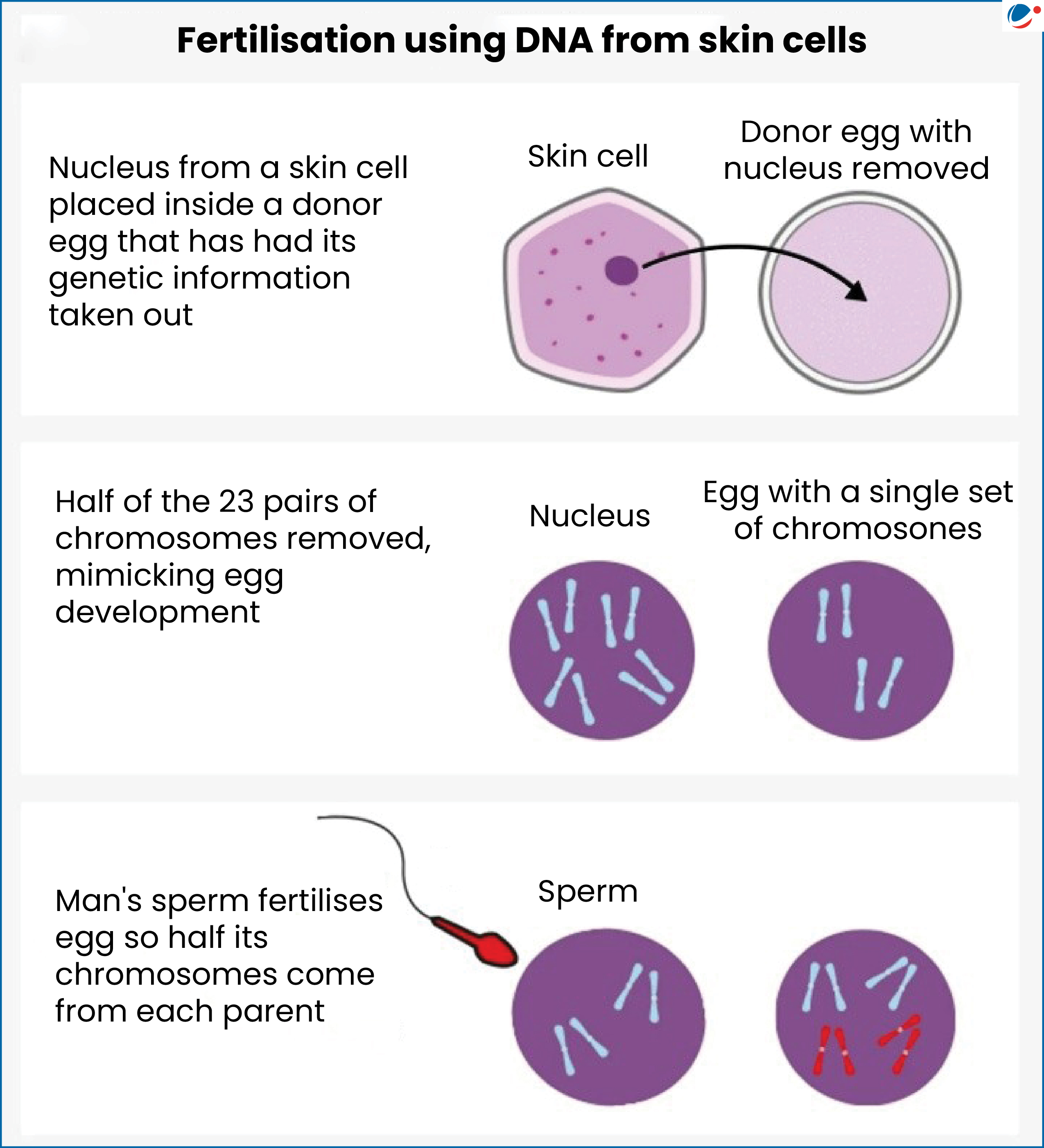Scientists have created egg-like cells capable of fertilization using DNA from ordinary skin cells in a major breakthrough for infertility research.
- The breakthrough offers a potential avenue for infertility treatment through a technique called in vitro gametogenesis (IVG).
- IVG refers to the process of generating gametes (functional eggs or sperm) in laboratory setting using the patient’s own genetic material (isolated germ cells or induced Pluripotent stem cells (iPSC)).

About Research
- To make eggs, researchers transplanted the nucleus of a human skin cell into a donor egg that had been stripped of its nucleus.
- This technique is known as Somatic Cell Nuclear Transfer (SCNT), a form of in vitro gametogenesis (IVG).
- However, the key challenge with IVG that the researchers had to surmount was making sure the reprogrammed fertilized egg had the right number of chromosomes.
- Gametes — sperm and eggs — each have 23 chromosomes, half of the 46 found in ordinary human cells such as skin cells.
- To remove extra 23 chromosomes from derived eggs, researchers devised a technique called “mitomeiosis”, mimicking natural cell division in a way that causes one set of 23 chromosomes to be discarded.



